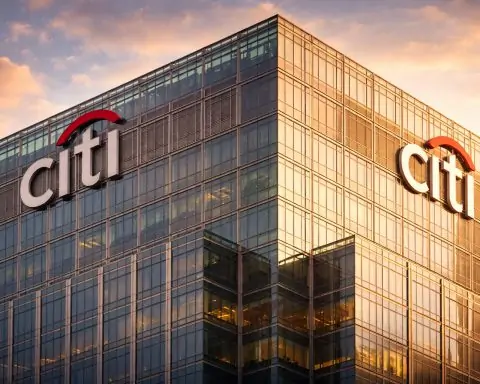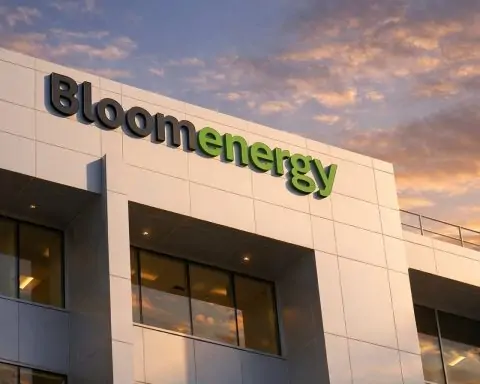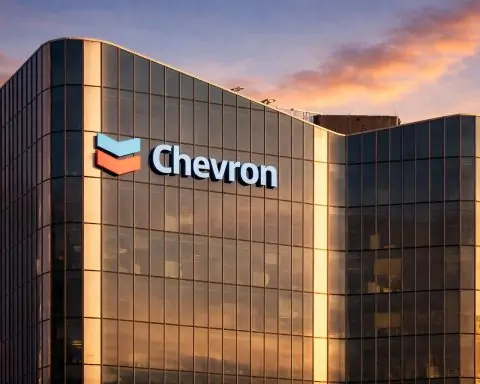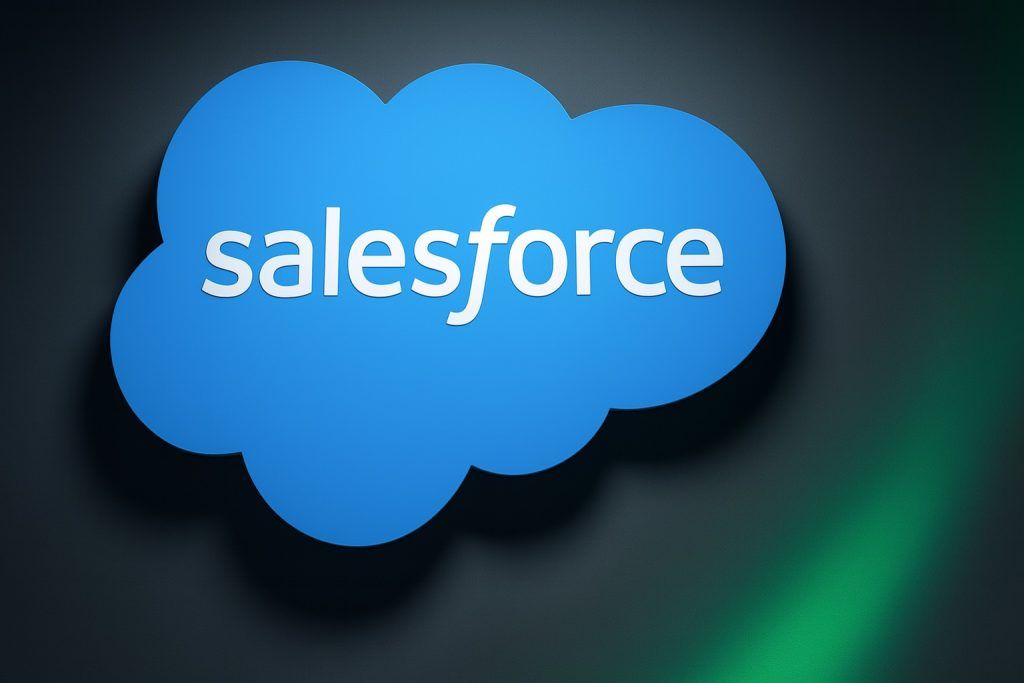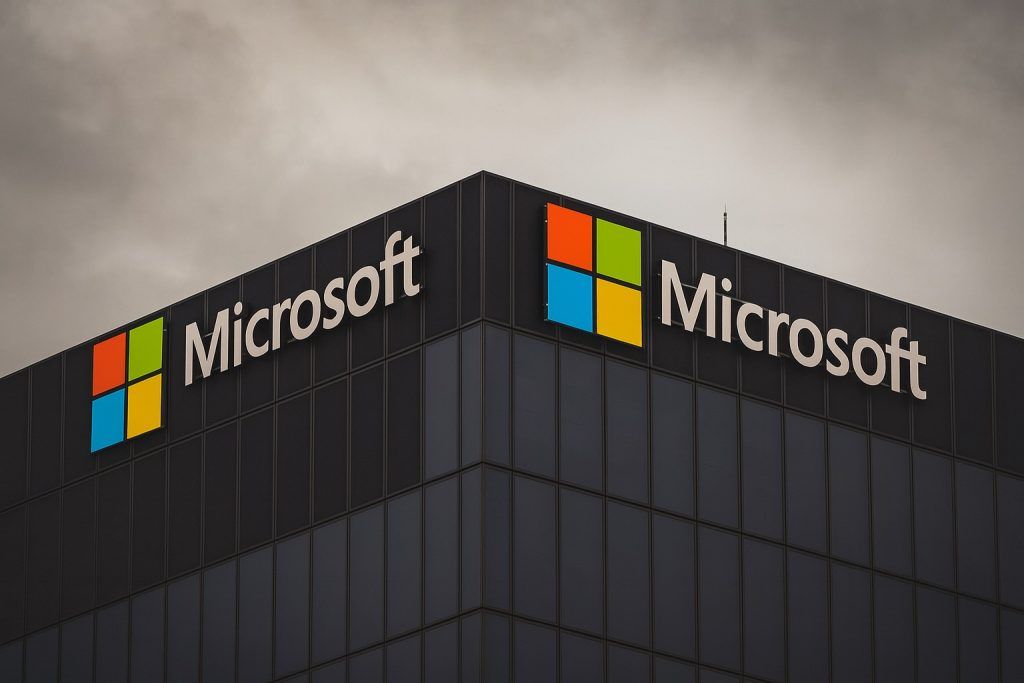What to Know Before Markets Open on October 20, 2025
- Stock at Multi-Month Highs: Applied Materials’ stock trades around $225 per share, near a 52-week high, after surging almost 20% from late-September lows (~$190) to mid-October peaks above $230 [1] [2]. Shares jumped ~4% on Wednesday alone, then pulled back ~1.2% Friday, reflecting high volatility in recent days [3]. The stock is up roughly 7–8% over the past week amid broader market strength [4].
- Recent Rally Drivers:Soaring AI chip demand and bullish analyst calls have fueled AMAT’s rise. Major banks upgraded the stock as AI infrastructure spending boosts chipmakers’ capex. Bank of America raised AMAT to Buy with a $250 target, citing “DRAM capacity expansion in 2026” and booming need for high-bandwidth memory in AI data centers [5]. Stifel also upgraded to Buy (target $215), highlighting robust memory investments and AMAT’s diversified product lineup [6].
- New Chipmaking Tech for AI: This month, Applied unveiled next-gen semiconductor equipment aimed at supercharging AI chips. The lineup includes a first-of-its-kind “Kinex” die-to-wafer hybrid bonding system (co-developed with BESI), a new Centura Xetra epitaxy tool for 2nm Gate-All-Around transistors, and an advanced e-beam metrology system – all designed to improve performance and efficiency in logic, memory (DRAM) and advanced packaging for AI accelerators [7] [8]. Executives say these materials engineering breakthroughs will help meet the power and speed needs of next-gen AI semiconductors [9].
- Export Curbs and Guidance Cut: Geopolitical headwinds remain. Applied warned that new U.S. export restrictions on China could cut ~$600 million from its 2026 sales and about $110 million from current-quarter revenue [10] [11]. In an August filing, the company had already guided a weaker Q4 2025, citing a pause in China orders and “non-linear” demand from leading-edge chip customers [12] [13]. This cautionary outlook sent AMAT shares tumbling ~13% in mid-August and “reverberated across the chip sector” at the time [14] [15].
- Sector Context – Boom & Risks:Semiconductor equipment makers like AMAT are riding a multi-year industry upswing thanks to the AI and data-center boom. U.S. data center construction hit an all-time high $40 billion annual rate mid-2025 (up 30% YoY) as tech giants pour money into AI infrastructure [16]. This generative AI gold rush is driving massive chip orders (benefiting companies like Nvidia) and ultimately spurs demand for chip-fabrication tools. However, cyclical swings and trade tensions temper the optimism. Memory-chip spending has been in a downturn but is expected to rebound with AI-driven upgrades in 2024–26 [17]. Meanwhile, Washington’s trade curbs loom large: a U.S. House report noted Chinese chipmakers bought $38 billion of fab tools last year (~39% of sales for AMAT and peers), prompting calls for even stricter bans on equipment sales to China [18] [19]. Such policies underscore the geopolitical risk facing AMAT despite strong secular demand.
Stock Price and Recent Performance 📈
Applied Materials’ stock has been on a tear in October, climbing to levels not seen in over a year. As of October 19, 2025 (last market close Oct. 17), AMAT traded around $225/share, just shy of its 52-week high (~$232 intraday) [20] [21]. The stock is up approximately 15% year-to-date and a remarkable 50%+ in the past six months, far outpacing the broader market [22]. Recent action has been especially volatile: shares jumped over 4% on Wednesday alone, then essentially flatlined Thursday near record territory, before slipping ~1.2% on Friday to $224.99 [23]. Despite that mild pullback, AMAT still gained about 7–8% on the week, reflecting bullish momentum tied to technology hype and earnings optimism [24].
This fall surge marks a sharp reversal from late summer. Back in mid-August, Applied Materials stock plunged ~13% in a day when the company issued cautious forecasts (more on that below), and by late September the stock was languishing around the high-$180s to $190 range [25] [26]. But sentiment shifted dramatically with the turn of the quarter: as September ended, investors piled back into chip stocks and AI plays. From a September 19 close near $190 to mid-October, AMAT rocketed nearly 20%, riding a broader tech rally that sent the Nasdaq to the cusp of new highs [27] [28]. In fact, October 15 saw Applied Materials hit a fresh 52-week high at $226.59, a “significant achievement” that underscores the company’s resilience and renewed investor confidence [29].
Several factors drove this rebound. Easing interest rate concerns and hopes of Fed rate cuts have lifted equity markets broadly (the S&P 500 and Dow are near record levels) – a favorable backdrop for high-valuation tech stocks. More specifically, enthusiasm around AI hardware demand has funneled into semiconductor names like AMAT. The company’s recent announcements and upbeat analyst commentary (discussed next) added fuel, convincing traders that the post-summer dip was a buying opportunity rather than a lasting setback. As a result, Applied Materials’ market capitalization now hovers around $180 billion, with the stock up about 22% year-on-year [30].
Investors should note, however, that at current levels AMAT is no longer “cheap.” By some analyses the stock “appears to be trading above its fair value” after the steep run-up [31]. In other words, a lot of good news may be priced in, and any stumble (be it an earnings miss or macro shock) could introduce turbulence. The past week’s swings – from euphoria to profit-taking – illustrate that volatility remains high. Still, the overall uptrend reflects a positive fundamental story that has, for the moment, overpowered the lingering risks.
Recent Developments: Earnings, Warnings and New Product Launches
Earnings & Guidance: Applied Materials’ latest financial results have been solid, but forward guidance turned cautious. In Q3 FY2025 (May–July), the company posted record revenue of $7.30 billion, up ~8% year-on-year and slightly above Wall Street estimates [32] [33]. Adjusted earnings of $2.48 per share also beat expectations [34]. CEO Gary Dickerson touted it as a sixth straight year of growth (per company statements) and evidence of strong execution despite a mixed macro environment.
However, when management looked ahead to the October quarter, they struck a wary tone. In an August 14 filing, Applied Materials slashed its Q4 forecast, projecting revenue of ~$6.7 billion (± $500M) versus consensus estimates above $7.3B [35]. Expected EPS of roughly $2.11 (± $0.20) likewise trailed analysts’ ~$2.39 forecast [36]. The company cited two main headwinds: “digestion of capacity in China” – i.e. Chinese chip fabs pausing new equipment orders to absorb recent investments – and “non-linear demand from leading-edge customers” due to economic uncertainty and timing of new fab projects [37] [38]. “We are expecting a decline in revenue in the fourth quarter driven by both digestion of capacity in China and [uneven] demand from leading-edge customers,” AMAT CFO Brice Hill explained [39].
This unexpectedly weak outlook was a jolt to the market. It came amid a broader narrative that some peers were weathering the China slump better than anticipated. “Many peers have shown surprising China strength… but Applied Materials’ results show much more volatility,” observed CFRA Research analyst Brooks Idler, highlighting AMAT’s outsized exposure to Chinese memory/chip customers [40]. Notably, China accounted for 35% of Applied’s sales in the July quarter [41], so any pullback there hits hard. The guidance bombshell sent AMAT shares down ~13% in after-hours trading on Aug. 14 and cast a cloud over the stock for weeks [42].
China Export Curbs: Fast forward to October, and geopolitical risks moved to the forefront. In the first week of October, the U.S. government expanded its semiconductor export restrictions on China, adding more Chinese firms (and their subsidiaries) to the blacklist and tightening loopholes [43] [44]. Applied Materials quickly warned investors that these new rules would materially impact its future sales. In a Oct. 2 filing, the company forecast a ~$600 million revenue hit in fiscal 2026 as a direct result of the broadened export curbs [45] [46]. It also estimated about a $110 million reduction in current-quarter (Q4) revenue due to the restrictions [47]. Essentially, certain advanced chipmaking tools and services that AMAT would have sold to Chinese customers now require licenses that are unlikely to be approved, cutting off a chunk of business [48] [49].
Unsurprisingly, this news pressured the stock. Applied Materials fell ~3% in after-hours trading on the announcement, then slid another 2–5% the next day as investors digested the implications [50]. It wasn’t just AMAT – the warning “reverberated across the chip sector”, hitting other equipment makers like ASML and Lam Research that similarly face China exposure [51] [52]. The takeaway is clear: export controls have become a key risk for semiconductor suppliers. Even amid booming global chip demand, losing access to China (one of the world’s largest chip markets) creates an overhang on long-term growth. AMAT and its peers are effectively caught in the crossfire of the U.S.–China tech standoff.
Notably, the U.S. government’s stance may tighten further. A U.S. House committee report in early October found Chinese chipmakers bought $38 billion worth of fab tools last year – about 39% of the combined sales of Applied Materials, Lam, KLA, ASML and Tokyo Electron [53] [54]. Lawmakers called for broader bans on chipmaking equipment sales to China, beyond just targeting specific companies [55]. Industry executives report that China orders have already started declining in 2023 due to regulations, but Washington appears to be pushing for an even “tighter noose” on Chinese semiconductor capability [56] [57]. For AMAT, this could mean further limitations on a market that recently made up over one-third of its revenue. In August the company explicitly assumed no new export licenses would be approved in its guidance [58] – a prudent, if sobering, assumption. Investors will be watching how these policies evolve, as they directly influence Applied’s outlook.
Product Announcements: On a more positive note, Applied Materials is not standing still. The company made headlines on October 7, 2025 by unveiling a suite of next-generation chipmaking systems aimed at the coming wave of AI chips. These new products target exactly the areas where semiconductor manufacturers are racing to innovate:
- Advanced Logic (Transistors): Applied introduced the Centura® Xetra epitaxy system (often called “Xetra Epi”), built to help create Gate-All-Around (GAA) transistors at the 2-nanometer node and beyond [59]. GAA is the cutting-edge transistor architecture that leading chipmakers (like TSMC, Intel, Samsung) are adopting to pack more performance into CPUs and AI accelerators. AMAT’s tool integrates pre-clean and etch steps with epitaxial deposition in a novel chamber design, achieving 50% lower gas usage and >40% improved uniformity versus conventional methods [60]. In plain English, it makes building the next generation of ultra-tiny, power-efficient transistors easier and greener.
- Memory & High-Bandwidth DRAM: To serve the exploding demand for AI memory (e.g. HBM – High Bandwidth Memory – used alongside GPUs), Applied unveiled a profiling and metrology system called PROVision™ 10. This is an advanced e-beam measurement tool that can handle the complex 3D structures in modern DRAM and logic chips [61]. It uses a cold-field emission electron source to boost imaging resolution by up to 50% and speed by 10x, allowing chipmakers to spot defects and verify nanoscale features with much greater precision [62].
- Advanced Chip Packaging: Perhaps the star of the show was Kinex™ – the industry’s first integrated die-to-wafer hybrid bonding platform [63]. Developed in collaboration with BE Semiconductor (Besi) of the Netherlands, Kinex enables chipmakers to “stack” and bond chips together in 3D packages more effectively. This technology is crucial for things like chiplet architectures and 3D-stacked memory, which are key to pushing AI performance higher. By combining all the delicate bonding steps in one tool, Kinex aims to improve yield and throughput for heterogeneous integration (think of putting memory directly on top of processors, etc.) [64] [65]. Early customers in logic, memory and outsourced assembly are already using it.
Company executives are confident these innovations will strengthen AMAT’s competitive position. “As chips become more complex, Applied is focused on driving materials engineering breakthroughs to provide the performance and power-efficiency improvements needed to scale AI,” said Dr. Prabu Raja, head of the Semiconductor Products Group [66]. In essence, AMAT is aligning its R&D with the industry’s biggest trend – AI acceleration – ensuring its tools will be in demand as chipmakers invest in next-gen fabs and packaging lines. The new systems were showcased at the SEMICON West 2025 conference, where they garnered significant interest.
From an investor standpoint, these product launches are significant for a couple reasons. First, they demonstrate that Applied Materials continues to innovate at the leading edge, which helps fend off competition (e.g. from other equipment makers) and opens up new markets (like advanced packaging, a hot growth area). Second, the timing is apt – as the semiconductor cycle turns up for logic and memory, AMAT now has new high-value tools to sell into those expansion cycles. Analysts took note: “[These systems] enhance the performance of AI chips… aimed at producing higher performance chips with lower power,” noted one report, which also flagged that AMAT’s strong product portfolio was a factor in recent analyst upgrades [67].
AI Boom, Industry Trends and Sector Outlook 🌐
The broader context for Applied Materials is a mix of unprecedented opportunity and familiar cyclicality. On one hand, the AI-driven investment boom is proving a rising tide for the semiconductor industry. Across the globe, spending on chip infrastructure – from fabs to data centers – is hitting record levels thanks to the surging demand for AI and high-performance computing.
A striking data point: in the U.S., data center construction reached an annualized $40 billion pace in mid-2025, an all-time high and +30% vs. last year [68]. This follows a 50% surge in 2024, illustrating how companies like Microsoft, Alphabet and Amazon are pouring money into cloud servers and AI supercomputers [69]. Those “hyperscaler” investments are a direct boon for semiconductor firms – Nvidia, for example, has seen explosive sales of its AI accelerator chips (GPUs) to data-center customers [70]. Indirectly, chip equipment suppliers benefit too, since chipmakers must build new factories or upgrade existing lines to supply the Googles and Amazons of the world with advanced silicon. In short, the AI gold rush is boosting demand not just for chips, but for the tools and materials needed to make those chips.
Chipmakers are responding by ramping up capital expenditures. Leading foundry TSMC, memory makers like Samsung and SK Hynix, and logic giants like Intel have all announced multi-billion-dollar fab projects (often with government incentives) to ensure they can meet future AI, 5G, and automotive chip needs. For instance, analysts expect a resurgence in memory chip investment heading into 2026: DRAM fab utilization is set to rise as the oversupply eases, and new high-bandwidth memory (HBM) capacity is being added to serve AI training clusters [71]. Applied Materials, being a top supplier to both logic and memory chip manufacturers, is positioned to ride that wave. Bank of America specifically cited DRAM capacity expansion plans for 2026 in its bullish take on AMAT [72], and other experts agree that the next upcycle in memory (after a painful downturn in 2024–25) could be substantial. This suggests that beyond the current AI hype in logic chips, memory equipment orders – a major part of AMAT’s business – may see a strong revival over the next 12–18 months.
On the flip side, there are risks that temper the long-term outlook:
- Geopolitics & Trade: As detailed earlier, U.S.–China tech tensions pose a structural headwind. China is both a large market and a potential competitor. The U.S. government is determined to prevent China from acquiring cutting-edge chip tools, citing security concerns. For companies like AMAT, this means navigating export license regimes and potentially losing Chinese customers if rules tighten. Indeed, Chinese fabs have reportedly shifted to buying more from non-U.S. vendors where possible (e.g. domestic Chinese toolmakers or suppliers from Japan) to mitigate U.S. sanctions [73] [74]. Over time, this could erode market share for U.S. equipment firms in China. Moreover, China is trying to develop its own semiconductor equipment industry – still years behind, but a priority for them. Applied’s management has to balance pursuing opportunities in China (within legal limits) against the reality that export policies could change suddenly, as they did in October.
- Cyclical Slowdowns: The semiconductor capital equipment business is historically cyclical. Periods of frenetic fab building (like the current AI-driven phase) are often followed by gluts and spending downturns. We saw an example last year: Memory chipmakers abruptly cut orders for tools as PC/smartphone demand cooled and inventories swelled. Applied itself acknowledged that after a period of heavy investment, clients often *“digest” capacity – i.e. pause orders – which can dent sales for a few quarters [75]. The concern now is that if the AI frenzy moderates (say, if data-center spending growth slows or if companies find they over-ordered GPUs), chipmakers might scale back 2026 capex more than expected. There are also macro considerations: high interest rates could restrain financing for big fab projects, and an economic slowdown could weaken end-user electronics demand.
- Competition and Technology Transitions: Applied Materials is a leader in many segments (deposition, etch, etc.), but it faces strong competitors like ASML (which dominates lithography) and Lam Research, KLA, Tokyo Electron, among others. If a competitor introduces a superior technology or if a customer (like Intel or Samsung) chooses a rival’s equipment for a new node, AMAT could lose share. Additionally, we’re at a point of major tech transitions: EUV lithography, new transistor designs (GAA), new packaging techniques, and materials (like new semiconductor compounds for power chips). Each transition is an opportunity for AMAT to sell new tools – but also a challenge to ensure its tools are adopted. The company’s recent launches indicate it’s keeping pace, but the landscape can change quickly.
Overall, the sector backdrop for AMAT is bullish but mixed. The “boom” side – surging AI/data-center demand, government subsidies (e.g. U.S. CHIPS Act, EU Chip Act) fueling fab builds, and a likely memory recovery – provides a strong tailwind going into 2026. The “risk” side – export bans, potential overcapacity, and geopolitical decoupling – means investors must remain vigilant. Wall Street appears to believe that the secular growth story outweighs the cyclical risks at the moment, given AMAT’s strong stock performance.
To illustrate the market’s current appetite: in late October, despite headlines about export curbs and Middle East conflicts, the Philadelphia Semiconductor Index is near all-time highs, and capital equipment stocks have been participating. Investors are essentially betting that the AI revolution will drive enough demand to keep chip factories humming (and ordering tools) even if certain markets like China are curtailed. Whether that bet pays off in the long run is something to watch closely.
Analyst Forecasts and Commentary 🔍
Wall Street analysts have been increasingly optimistic about Applied Materials in recent weeks, following a period of caution over the summer. The company’s exposure to AI and broad customer base across logic, foundry, and memory has led many experts to predict robust growth resuming in 2024–2025, albeit with some near-term turbulence.
Several high-profile upgrades and price target hikes hit the tape around mid-October:
- Bank of America upgraded AMAT to “Buy” and set a Street-high $250 price target [76]. BofA’s note pointed to strengthening demand for memory chips used in AI (like HBM for data centers) and anticipated a new cycle of DRAM factory expansions in 2026 to support that demand [77]. Essentially, they argue that as cloud giants scramble to secure AI memory and as PC/phone memory demand eventually recovers, memory makers will invest heavily – and AMAT will sell more tools as a result. BofA also cited Applied’s opportunities in servicing the expansion of TSMC’s advanced chip capacity (since TSMC and foundries are raising capital spending for cutting-edge logic) [78].
- Stifel likewise upgraded the stock to “Buy” with a $215 target [79]. Stifel’s analysts highlighted AMAT’s diversified product lineup – noting it sells into logic, DRAM, NAND, packaging, etc. – which can help offset weakness in any single segment [80]. They were encouraged by signs of life in the memory market and believed Applied’s exposure to multiple tech “spending drivers” (AI, 5G, automotive chips) supports a favorable outlook.
- Cantor Fitzgerald went as far as naming Applied Materials one of its “best ideas” among semi-equipment stocks, maintaining an Overweight rating. Cantor recently reiterated a price target in the mid-$200s (reports vary from $225 to $250 in target – one source had $250 [81], while an investing note mentions $225 [82]). In either case, Cantor is bullish. They argue that concerns about export rules are overdone – estimating only about a 2% hit to FY2026 revenue from the new U.S.–China curbs [83] – and that NAND memory upgrades and foundry (TSMC) capital outlays will fuel Applied’s growth in the coming years [84]. In other words, lost sales to China can be made up elsewhere as other regions ramp up investment.
- Other analysts chimed in with generally positive, if more measured, views. For instance, Bernstein (in partnership with Société Générale) maintained an “Outperform” rating but kept their target around $195 [85]. This is below the current trading price, indicating Bernstein sees the stock as fairly valued after the rally. They remain positive on AMAT’s long-term prospects but are a bit cautious on valuation and the regulatory overhang. Similarly, Citi and Wolfe Research reportedly issued post-earnings targets in the low $200s back in August, reflecting tempered expectations right after the weak guidance [86] – those may yet be revised upward if trends improve.
We also have commentary from market experts outside of bank research. When AMAT warned about China in early October, some strategists noted that while short-term sentiment could suffer, the underlying demand for chips (especially for AI) is so strong that equipment suppliers should recover. “Geopolitical policies can directly impact corporate outlooks – even amid booming chip demand,” one analyst noted, cautioning that export controls are a wildcard but not a thesis breaker for the industry [87] [88]. The consensus seems to be that near-term earnings estimates for AMAT have been trimmed (to account for the China headwind and soft current quarter), but 2024–2025 estimates may begin to rise if orders from other regions ramp up as expected.
Importantly, Applied’s management has struck a confident tone in recent public comments. They emphasize a growing backlog and strong interest in new products. The company also continues to return cash to shareholders (with 21 consecutive years of dividends and buybacks) [89], which analysts view as a sign of financial strength. According to InvestingPro’s models, AMAT scores well on financial health metrics [90] – it’s profitable, cash-generative, and not over-leveraged – giving it flexibility to navigate bumps in the road. This solid footing likely underpins some of the analyst optimism: even if a quarter or two is soft, Applied can invest through the downturn and emerge stronger when demand rebounds.
That said, analysts do warn of valuation risk and execution risk. After the stock’s run, trading around 25x forward earnings, AMAT needs to deliver on the growth narrative to justify further upside. Any disappointment in the upcoming earnings (for example, if orders for next quarter come in light) could spark a pullback. Moreover, the uncertainty around China means guidance will probably include larger error bars than usual. As one strategist put it, the tech rally “has taken on a life of its own… it will eventually crest” [91], implying that investors should be prepared for swings. Still, with multiple analysts raising targets and few outright bearish calls, the Street’s bias is clearly to the upside barring a macro shock.
Conclusion: AI Tailwinds vs. Geopolitical Headwinds
Applied Materials, Inc. finds itself at an interesting crossroads in late 2025. The company’s share price is riding high on a wave of AI-fueled optimism, reflecting its critical role in enabling the next generation of chips. Demand drivers are strong – from cloud data centers to advanced logic and memory – and AMAT’s latest product innovations show it is adapting to serve those needs. In the near term, the stock has positive momentum, supported by improving sentiment and a broader market at records.
However, investors should remain aware of the dual narrative at play:
- On one side, secular growth themes (AI, big data, electrification) are boosting chip industry spending. This bodes extremely well for leading equipment suppliers like Applied over the next several years. Many analysts see AMAT as a prime beneficiary of the “AI gold rush” in semiconductors and expect earnings to accelerate as memory and logic makers increase their orders.
- On the other side, cyclical and political challenges could inject volatility. The company has already navigated a mini-downcycle in memory and faces ongoing uncertainty around how far U.S.–China tech decoupling will go. These factors could constrain upside or lead to periodic sell-offs on negative news.
For now, the balance appears favorable – with Wall Street upgrades and a strong industry backdrop outweighing the risks in investors’ minds. As one report put it, despite export curbs, analysts “appear optimistic about the company’s long-term prospects” [92]. The coming earnings release and management’s commentary will be key in confirming whether the “AI super-cycle” can indeed carry Applied Materials to new heights in revenue and profit, or whether it needs to reset expectations once more.
Bottom line: Applied Materials’ stock has surged to near-record highs thanks to the global AI chip boom and supportive analysts [93] [94]. The company is executing well – launching new AI-focused tools and capitalizing on strong semiconductor demand – but it must also contend with the headwinds of trade restrictions and normal industry cyclicality. For investors, AMAT offers a compelling play on the picks-and-shovels side of the AI revolution, with a proven track record in both technology and shareholder returns. Yet, prudence is warranted. The next chapters in this story will depend on how the chip cycle evolves and whether geopolitical challenges can be managed without derailing the current uptrend. In the tug-of-war between booming AI tailwinds and restrictive China headwinds, Applied Materials’ execution and adaptability will determine if its stock’s stellar run can continue into 2026 and beyond.
Sources: Reputable news and analysis including TS2.tech market reports, Reuters and Bloomberg newswires, company press releases, and financial analyst commentary [95] [96] [97] [98] [99] [100]. All facts and quotes are drawn from these verified sources.
References
1. www.investing.com, 2. www.investing.com, 3. www.investing.com, 4. ts2.tech, 5. ts2.tech, 6. ts2.tech, 7. www.streetinsider.com, 8. www.streetinsider.com, 9. www.streetinsider.com, 10. ts2.tech, 11. ts2.tech, 12. www.reuters.com, 13. www.reuters.com, 14. ts2.tech, 15. ts2.tech, 16. www.reuters.com, 17. ts2.tech, 18. www.reuters.com, 19. www.reuters.com, 20. www.investing.com, 21. www.investing.com, 22. www.investing.com, 23. www.investing.com, 24. ts2.tech, 25. www.investing.com, 26. www.investing.com, 27. ts2.tech, 28. ts2.tech, 29. www.investing.com, 30. www.investing.com, 31. www.investing.com, 32. www.reuters.com, 33. www.reuters.com, 34. www.reuters.com, 35. www.reuters.com, 36. www.reuters.com, 37. www.reuters.com, 38. www.reuters.com, 39. www.reuters.com, 40. www.reuters.com, 41. www.reuters.com, 42. www.reuters.com, 43. ts2.tech, 44. ts2.tech, 45. www.reuters.com, 46. www.reuters.com, 47. www.reuters.com, 48. www.reuters.com, 49. www.reuters.com, 50. ts2.tech, 51. ts2.tech, 52. ts2.tech, 53. www.reuters.com, 54. www.reuters.com, 55. www.reuters.com, 56. www.reuters.com, 57. www.reuters.com, 58. www.reuters.com, 59. www.streetinsider.com, 60. www.streetinsider.com, 61. www.streetinsider.com, 62. www.streetinsider.com, 63. www.streetinsider.com, 64. www.streetinsider.com, 65. www.streetinsider.com, 66. www.streetinsider.com, 67. www.investing.com, 68. www.reuters.com, 69. www.reuters.com, 70. www.reuters.com, 71. ts2.tech, 72. ts2.tech, 73. www.reuters.com, 74. www.reuters.com, 75. www.reuters.com, 76. ts2.tech, 77. ts2.tech, 78. ts2.tech, 79. ts2.tech, 80. ts2.tech, 81. ts2.tech, 82. www.investing.com, 83. www.investing.com, 84. ts2.tech, 85. www.investing.com, 86. www.quiverquant.com, 87. ts2.tech, 88. ts2.tech, 89. www.investing.com, 90. www.investing.com, 91. ts2.tech, 92. www.investing.com, 93. www.investing.com, 94. ts2.tech, 95. ts2.tech, 96. ts2.tech, 97. www.streetinsider.com, 98. www.reuters.com, 99. www.reuters.com, 100. www.investing.com

